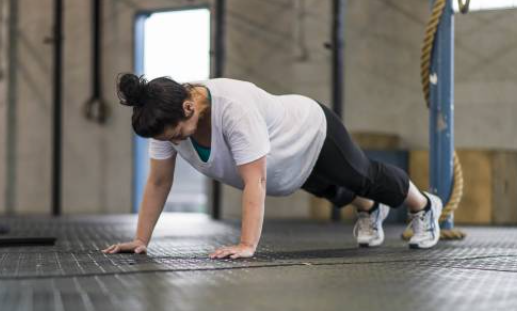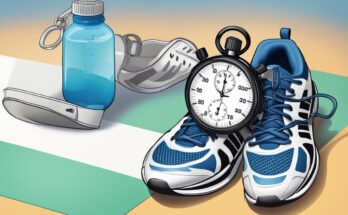Going for a run is a popular way to stay fit and healthy. However, when an individual is feeling under the weather, they may question whether going for a run is a good idea. The common cold and flu are illnesses that can make a person feel weak and tired. Running while sick can potentially worsen the symptoms and prolong the recovery process.
The immune system is responsible for fighting off infections and viruses. When the body is fighting an illness, the immune system is already working hard to combat the infection. Running while sick can put additional stress on the body, making it harder for the immune system to do its job. This can lead to a longer recovery time and potentially more severe symptoms.
Is it Safe to Exercise When Sick?
When feeling under the weather, many people wonder if it is safe to exercise. The answer depends on the severity of the illness and the symptoms present.
The Basics of Exercising When Sick
In general, it is safe to exercise when experiencing mild symptoms such as a runny nose or sore throat. However, it is important to listen to your body and not push yourself too hard. It is also crucial to stay hydrated and avoid contact with others to prevent spreading the illness.
Symptoms Above the Neck
If symptoms are limited to above the neck, such as a runny nose or sore throat, it is likely safe to engage in light exercise. In fact, exercise may even help alleviate some symptoms and boost the immune system.
Symptoms Below the Neck
If symptoms are below the neck, such as chest congestion or shortness of breath, it is best to avoid exercise altogether. Engaging in physical activity can put additional strain on the body and make symptoms worse. It is important to rest and allow the body to recover.
It is important to note that exercising with a fever is never recommended. A fever is a sign that the body is fighting an infection and needs rest to recover.
Overall, when deciding whether to exercise when sick, it is important to consider the severity of symptoms and listen to your body. It may be best to take a break from exercise and allow the body to recover fully before returning to physical activity.
Sources: Mayo Clinic, Harvard Health Publishing.
The Importance of Rest
Why Rest is Important
Rest is an essential part of the recovery process when someone is sick. When the body is fighting off an illness, it needs to conserve energy to focus on healing. Running while sick can further drain the body’s resources, making it harder to recover. Resting allows the immune system to work more efficiently and can speed up the recovery process.
How Much Rest Do You Need?
The amount of rest needed depends on the severity of the illness. For mild illnesses, such as a cold or sore throat, a rest day may be enough. For more severe illnesses, such as the flu or pneumonia, bed rest may be necessary. It’s important to listen to your body and give it the rest it needs to recover fully.
When to Resume Exercise
When someone is sick, it’s important to wait until they are fully recovered before resuming exercise. Attempting to exercise too soon can prolong the illness and lead to more serious health issues. Once the illness has passed, it’s important to ease back into exercise gradually. Starting with light exercise and gradually increasing the intensity can help prevent injury and improve performance.
Rest is a crucial part of the recovery process when someone is under the weather. It allows the body to focus on healing and conserving energy. By getting enough rest, the immune system can work more efficiently, and the body can recover faster. It’s important to listen to your body and give it the rest it needs to fully recover.
The Risks of Exercising When Sick
When someone is feeling under the weather, they might be tempted to go on a run or hit the gym to sweat out their illness. However, exercising when sick can have several risks and potential negative consequences. This section will explore the risks of exercising when sick, including the risk of spreading illness and the risk of worsening symptoms.
The Risk of Spreading Illness
When someone is sick, they are often contagious and can spread their illness to others. Exercising in public spaces, such as a gym or park, can increase the risk of spreading illness to others. This is especially true for respiratory illnesses, such as the flu or COVID-19, which can be spread through droplets in the air. It is important to follow social distancing guidelines and avoid exercising in public spaces when sick to prevent the spread of illness.
The Risk of Worsening Symptoms
Exercising when sick can also worsen symptoms and prolong the duration of illness. Physical activity can put additional stress on the body, which can make it harder for the body to fight off the illness. This is especially true for strength training or high-intensity workouts, which can put a significant strain on the body. Walking or light exercise may be more appropriate when sick, but it is important to listen to the body and avoid pushing too hard.
It is also important to consider the type of illness when deciding whether to exercise. For example, someone with seasonal allergies may be able to exercise without worsening symptoms, while someone with bronchitis or a respiratory infection may experience shortness of breath or chest pain during exercise. It is important to follow the “neck rule,” which states that if symptoms are above the neck (such as a runny nose or sore throat), it may be safe to exercise, but if symptoms are below the neck (such as chest congestion or body aches), it is best to rest.
In general, it is best to listen to the body and use common sense when deciding whether to exercise when sick. Home remedies, such as rest and hydration, are often the best course of action to help the body recover. If someone experiences dizziness, asthma symptoms, or other concerning symptoms during exercise, they should stop immediately and seek medical attention if necessary.
Tips for Exercising When Sick
When feeling under the weather, it can be difficult to know whether to exercise or rest. Here are some tips for exercising when sick:
What Types of Exercise are Best?
According to Mayo Clinic Sports Medicine, low-intensity exercises such as walking, yoga, and stretching can be beneficial for individuals who are sick. These exercises help to increase blood flow and boost the immune system without putting too much strain on the body.
How to Modify Your Exercise Routine
If an individual is experiencing symptoms such as an upset stomach, vomiting, or a hacking cough, it may be best to skip exercise altogether. However, if an individual feels up to it, they can modify their exercise routine to accommodate their symptoms. For example, if someone is experiencing a fever, it is important to avoid exercise that raises the body temperature further.
When to Skip Exercise
There are certain situations where it is best to skip exercise altogether. If an individual is experiencing symptoms such as chest pain, shortness of breath, or dizziness, they should seek medical attention immediately and avoid exercise until cleared by a doctor.
In summary, when exercising while sick, it is important to listen to your body and modify your routine accordingly. Low-intensity exercises such as walking and yoga can be beneficial, but it is important to avoid exercise that exacerbates symptoms or puts too much strain on the body.
Can you exercise with a cold?
And even if you were to do a quick workout with your “symptoms above the neck, some exercises are better than others. When you exercise, your white blood cells – the ones that fight infection – travel through your body faster and do their job better. If you have severe symptoms, these illnesses make your immune system work overtime and exercise will only create more stress for it, says Keegan Draper, CPT, Fitness Specialist at Mindbody. But even a simple 20-minute walk can help you get the benefits of regular exercise, and it can also help improve cold symptoms.
Instead, try to focus on moderate exercise efforts that won’t cause you to lose your workout gains but also won’t make your symptoms worse. It’s not a problem for most of us, but if you’re a workout fanatic, be sure to take time to rest and recover after periods of intense training. And the American College on Exercise recommends abstaining altogether if you have flu-like or below-the-neck symptoms, such as nausea or vomiting.




